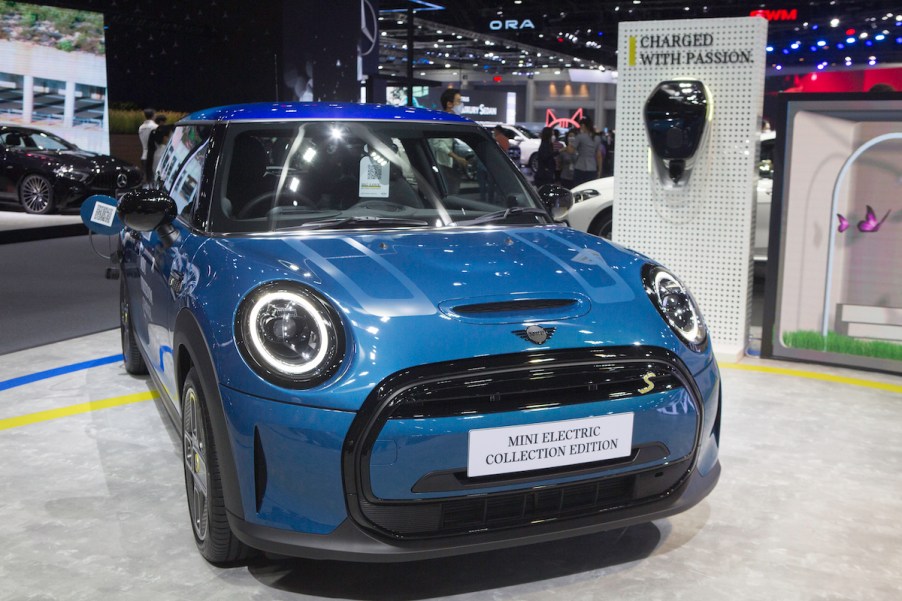
3 Terrible Electric Vehicles (EVs) With Standard Driving Ranges Under 200 Miles
The EV revolution is steadily coming along. There are many EV options in various segments of the market. To address range anxiety among drivers, EV automakers have steadily improved their driving range, but there are still a few with terrible range numbers. Here are the three EVs in the American car market with a standard driving range under 200 miles.
3. The Nissan Leaf is cheap but doesn’t have much range
The Nissan Leaf is one of the oldest EV options on the market, and it’s still an affordable and low-range EV option. According to Car and Driver, a 2023 Leaf starts at about $28,000 before incentives, making it the cheapest EV option right now. The Leaf’s affordability will come at a price, largely seen in its range numbers.
The standard Leaf has a 40-kWh battery that only allows it to get 149 miles of range. The standard Leaf also has a weak electric motor, only getting 147 hp. The good news is that Nissan has a more powerful, longer-range option.
The SV Plus trim costs about $37,000, but it improves the Leaf’s power output and range. The SV Plus trim gets 214 hp from its electric motor and is paired with a 62-kWh battery allowing the Leaf to get 226 miles of range. This makes it the only Leaf worth buying if shoppers want a daily driver.
2. The Mini Cooper Electric has a minuscule amount of range

The Mini Cooper Electric is an electric version of the stylish Mini Cooper. It’s also a reasonably affordable EV option, starting at about $31,000 before incentives. The Cooper Electric has only one powertrain option, and its electric motor gets about 181 hp. This allows it to accelerate from 0 to 60 mph in 6.1 seconds, making the Mini a fun car to drive.
The only problem, however, is that drivers won’t be able to drive very far in the Cooper Electric. Mini gave the EV a 28.9-kWh battery, and this only allows the Cooper Electric to go 114 miles on a single charge. Currently, it doesn’t have a larger battery option. As a result, the Cooper Electric is only a viable option for drivers who live in the city or for drivers who don’t plan to drive the Cooper Electric much at all.
1. The Mazda MX-30 is only available in one state and has a terrible range
The Mazda MX-30 is Mazda’s first EV entry in the U.S. and has several problems. The most obvious issue is that the MX-30 mainly exists to comply with California’s regulations, and as a result, it’s currently only available in California. Mazda may eventually decide to sell the MX-30 in other states, but it’s not clear when that will happen.
It’s also not clear if car shoppers will even want the MX-30. It’s a compact crossover SUV, which makes it larger than the Cooper Electric or the Leaf. However, it also costs more, starting at about $35,000 before incentives. Not only that, but the MX-30 also has a worse range than the Leaf or the Cooper Electric.
Mazda gave the MX-30 one powertrain option, and its electric motor only generates 143 hp. It’s paired with a 35.5-kWh battery pack, and this only allows the Mazda EV to go 100 miles. Mazda does not currently offer any other battery option for this low-range EV.


